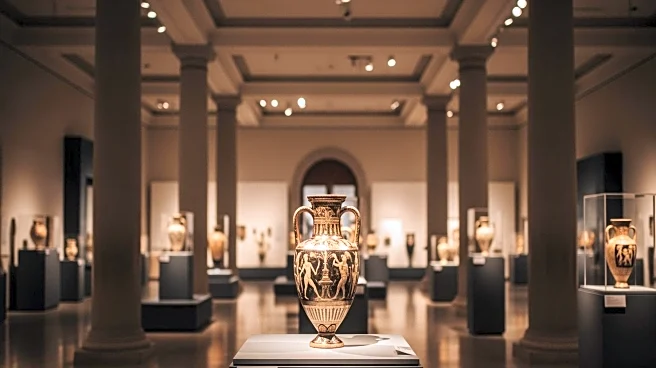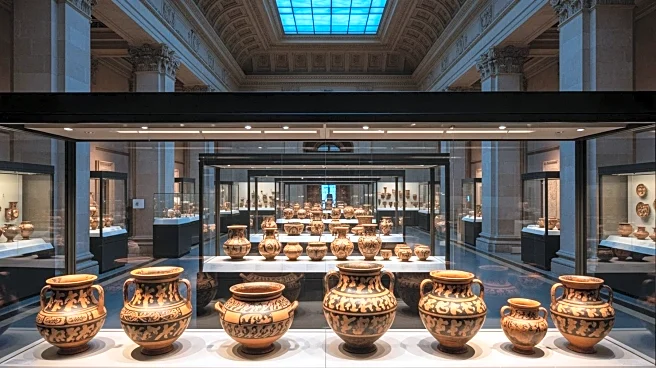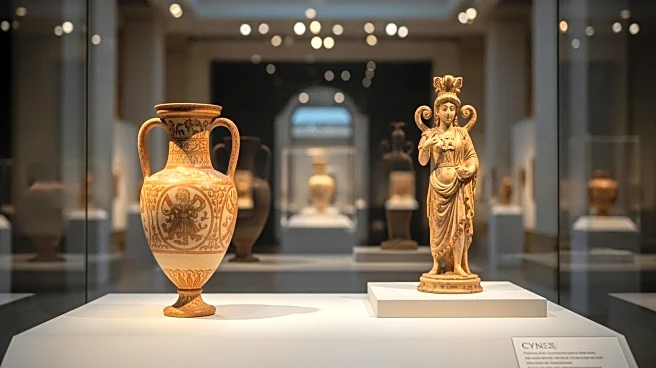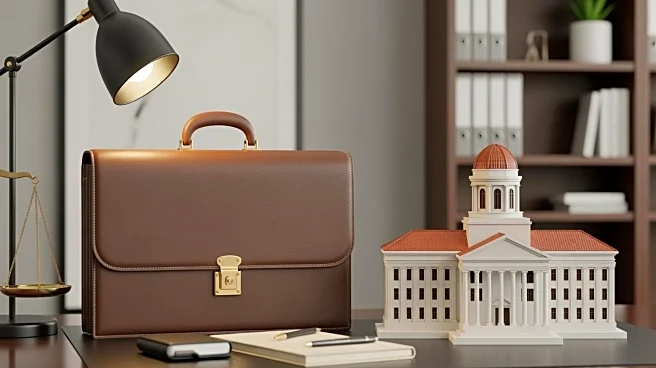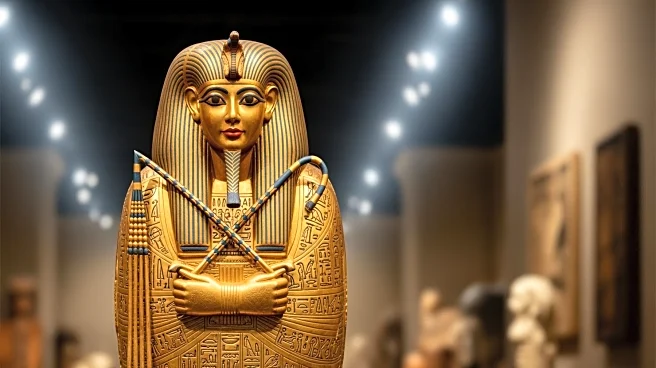What's Happening?
The John and Mable Ringling Museum of Art in Sarasota, Florida, has inaugurated its first permanent ancient-art gallery, showcasing a significant collection of Cypriot artifacts. This collection, acquired
by John Ringling in 1928 from the Metropolitan Museum of Art, includes around 3,300 pieces of ancient Mediterranean art. The gallery features rare and unique items, such as limestone statues from a sanctuary dedicated to Apollo, and silver jewelry adorned with animal motifs. The collection reflects Cyprus's historical role as a hub of trade and cultural exchange, influenced by Egyptian, Aegean, Mycenaean, and Persian cultures. The exhibition was curated by archaeologist Joanna S. Smith and Sarah Cartwright, the museum's chief curator, who spent a decade on conservation and research to provide historical context for the artifacts.
Why It's Important?
The opening of this gallery is significant for both the museum and the broader cultural landscape. It enhances the museum's status as a major repository of ancient Cypriot art in North America, following the Met and the Penn Museum. The exhibition offers insights into the cultural and historical significance of Cyprus as a center of ancient trade and cultural exchange. It also highlights the importance of preserving and understanding ancient artifacts, providing a valuable educational resource for scholars and the public. The gallery's focus on Cypriot art, rather than more commonly collected Greek or Roman artifacts, underscores the unique contributions of Cypriot culture to the ancient world.
What's Next?
The Ringling Museum plans to periodically rotate the displayed objects, reflecting the Cypriot tradition of burying votive offerings to make space for new tributes. This approach will keep the exhibition dynamic and engaging for repeat visitors. The museum may also continue to explore and exhibit other aspects of its extensive collection, potentially drawing more attention to lesser-known ancient cultures. The gallery's opening could inspire other institutions to re-evaluate and showcase their collections in new ways, fostering a deeper appreciation for ancient art and history.
Beyond the Headlines
The exhibition raises questions about the ethics of artifact collection and the historical context of such acquisitions. Luigi Palma di Cesnola, the original collector of many of these artifacts, was not a trained archaeologist and often fictionalized his finds. This highlights the challenges of provenance research and the importance of transparency in the art world. The gallery also serves as a reminder of the interconnectedness of ancient cultures and the value of cultural diversity, offering lessons in innovation and creativity that remain relevant today.
